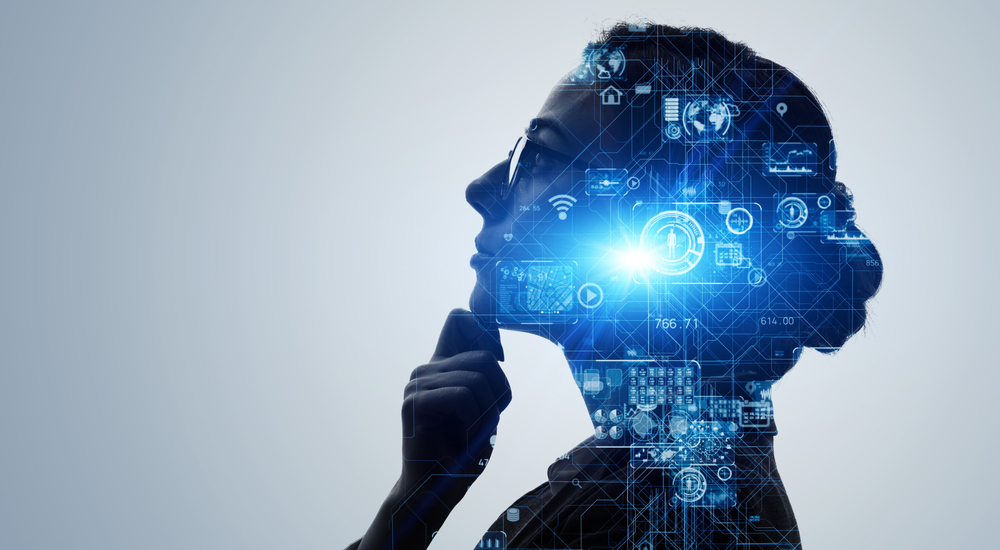Highlights:
- The digital brain fuels change by boosting self-awareness in businesses, aiding them in adapting and innovating in dynamic environments.
- It facilitates decision-making by integrating sophisticated algorithms, data analysis, machine learning, and acquired patterns.
In a world where data is the lifeblood of business, the absence of a digital brain, a powerful amalgamation of artificial intelligence and data analytics, presents organizations with a formidable challenge. Let’s delve into the following situations to gain a better understanding.
A company with a strong reputation for producing exceptional products may face a significant challenge due to the synergy between its sales department, information management, and customer base being less effective than desired.
In another instance, picture a company’s operations slowed due to manual processes, inefficiencies, or an inability to adapt to a rapidly evolving business landscape.
The above circumstances will have the following consequences:
- Missed opportunities
- Lack of efficiency
- Incompetency
Consequently, companies without a digital brain face significant challenges with widespread impacts on their ability to adapt, innovate, and thrive in a data-centric world.
So, what is a digital brain? It is an advanced technology embraced by innovative businesses. It’s nothing but an all-encompassing digital system for data-driven decision-making, process optimization, and automation, enabling organizations to operate more efficiently, make better-informed choices, and enhance customer experiences.
In a nutshell, it harnesses data from various sources to bolster workplace intelligence and offer immediate insights into product updates, production challenges, service disruptions, sales promotions, etc. It is like all under one roof.
This fosters quick, well-informed customer interactions and minimizes disruptions, contributing to more efficient operations and higher customer satisfaction.
With the foundation laid in our introduction, we are now poised to explore the pivotal role of the digital brain in optimizing organizational processes.
Harnessing Digital Brain for Streamlined Process Enhancement
In today’s constantly changing business environment, companies can elevate their digital transformation journey by fostering organization-wide intelligence and a collaborative culture.
Consider these key insights that illuminate how it attains streamlined processes:
- Integrating a ‘digital brain’ that learns from data across all domains, empowers more effective and lasting transformation and avoids superficial, short-term changes.
- It provides a comprehensive perspective on the necessary steps for implementing changes. It allows the introduction of process optimization to enhance current operations, transforming complex, multi-step projects into streamlined workflows.
- The rise of microservices and IoT has pushed intelligence to the edge, where small but powerful sensors and devices now compete with smartphones. Open-source software fuels a maker culture, empowering companies to create and innovate with software instead of just using it.
- It catalyzes organizational change by fostering self-awareness. It helps companies understand their strengths, weaknesses, and opportunities, empowering them to adapt and innovate in a dynamic business environment.
- Companies embark on digital transformation due to concerns about the unknown consequences of inaction. The digital brain signifies the transformation’s culmination, offering a monetizable business model. It begins with microservices, where businesses reshape as smaller units harnessing IoT and cloud data.
This marks a significant shift in our approach and interaction with our work environment, holding the promise of heightened efficiency, user-centricity, and dynamism in our workplaces and work processes.
With the profound impact of the digital brain on process optimization understood, let’s embark on a journey to explore its distinct roles within organizational dynamics.
Enhancing Organizational Decision-Making: The Role of the Digital Brain
The human brain, renowned for its remarkable decision-making capabilities, is an organ of profound complexity. It is crucial to acknowledge that, despite its incredible capabilities, the brain has finite storage capacity.
Stanford University research reveals approximately 125 trillion synapses in the cerebral cortex alone. Moreover, while the average adult brain can store about 2.5 million gigabytes of digital memory, it’s important to note that there are inherent limits to its storage capacity.
When delving into the intricate realm of human decision-making, it becomes evident that two prominent factors play a pivotal role:
- The inherent power of intuition
- The pervasive influence of cognitive biases
However, in the realm of the digital brain, it primarily enables you to:
- Effortlessly absorb and organize information
- Quickly capture important details
- Systematically arrange your thoughts, unveiling intriguing patterns
So, decision-making facilitated by digital brain mapping with the help of advanced algorithms, data analysis, machine learning methodologies, and the application of acquired patterns and relationships takes center stage. These systems are particularly adept in handling substantial datasets, unraveling intricate patterns, and responding to real-time and automated decision-making demands.
A digital brain app revolutionizes decision-making for organizations in the following ways:
- By swiftly analyzing vast data, revealing valuable insights, including patterns and trends often missed by humans.
- By providing real-time data analysis and predictions that facilitate swift, informed decision-making.
- By providing insights on product updates, production issues, service disruptions, and sales promotions, it facilitates quick and informed customer interactions.
- By offering personalized customer experiences, such as those seen on e-commerce platforms, these systems are used for tailored product recommendations.
- By optimizing resource allocation which ensures that resources are used effectively and are in line with organizational goals.
This shows how the digital brain has a versatile role in decision-making. It enhances efficiency and agility while maintaining a competitive edge in the data-centric world. Let’s explore its new approach to digital transformation in the current era.
‘Digital Brain’ Necessitates a Novel Approach to ‘Digital Transformation’
Business disruptions like the pandemic and chip shortages are a stark reality. In response, traditional siloed organizations must transition to digital operating models that offer a global, real-time perspective. This transition isn’t solely about adopting new systems; it entails a fundamental shift in mindset. This new mindset embraces rapid innovation, fosters stronger connections with suppliers and customers, and prioritizes data-driven decision-making to enhance resilience and profitability.
Despite recent market challenges, companies that have embraced this new mindset consistently deliver innovative products and services. Their digital operating models, encompassing digital brain solutions, offer invaluable insights into customer preferences. These insights enable them to make customer-centric decisions and cultivate long-term loyalty.
Final Words
In conclusion, while the full realization of the digital brain may still be on the horizon, we find ourselves standing at the threshold of an era where the tools and technologies to create it are within our grasp. The pace of innovation is accelerating, bringing us closer to a future where individuals can concentrate on tasks that harness their unique human capabilities.
As we strive to fulfill our potential, this technology is poised to handle the remaining intricacies and complexities, ushering in a new era of enhanced efficiency, productivity, and, ultimately, realizing our collective potential.
Enhance your understanding by delving into various informative technology-centric whitepapers in our resource center.





























































